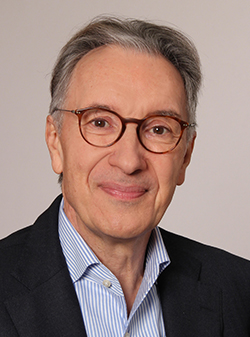
Year of Election
Division
Nationality
Country/Region of working/living
City
Institute
CV
Alain-Sol Sznitman has been at ETH Zurich since 1991, when he was appointed full Professor in the Department of Mathematics. He has been director of the FIM (Mathematics Research Institute) from October 1995 until September 1999.
Professor Sznitman was born on December 13, 1955 in Paris. He studied at the Ecole Normale Supérieure in Paris. Following his studies he became Attaché de Recherche at C.N.R.S. in October 1979, and worked at the Laboratoire de Probabilités de l'Université Pierre et Marie Curie. In 1983 he received the Doctorat d'Etat, became Chargé de Recherche and then spent two years at the Courant Institute in New York, returning to Paris in September 1985. In September 1987 he was appointed associate professor at the Courant Institute, and in September 1990 full professor. In 1989 Professor Sznitman received the Alfred P. Sloane Fellowship, and in 1991 the Rollo Davidson Prize. In 1992 he presented a Plenary Lecture at the First European Congress of Mathematics in Paris. In July 1997 he became a Fellow of the Institute of Mathematical Statistics. In August 1998 he was an Invited Speaker at the International Congress of Mathematicians in Berlin, and in September 1999 he received the Line and Michel Loève Prize. In 2008 he became member of the Academia Europaea, in 2012 member of the Inaugural Class of AMS Fellows, and in 2014 member of the IMU Circle. In 2022 he was the recipent of the Blaise Pascal Medal in Mathematics and became member of the European Academy of Sciences.
Professor Sznitman's research concerns probability theory, with a special focus on problems connected with physics, in particular problems of random media. He is the author of several scientific publications and member of several scientific committees.
🏆2022 Blaise Pascal Medallist in Mathematics
In recognition for his contributions to Probability Theory. He is one of the main players who have transformed probability theory into one of the most active and important branches of mainstream mathematics — both directly via their own work, but also by creating a sense of community. In this last decade, Sznitman has again crafted a deep subject. With the “interlacement” questions, one looks at questions of the connectivity properties of “the complement of a random structure” rather that of the random structure itself. This turned out to be a deep topic, with relations to many other currently active areas of probability theory (maxima of random fields), where again, the ideas that he developed turn out to be central.
